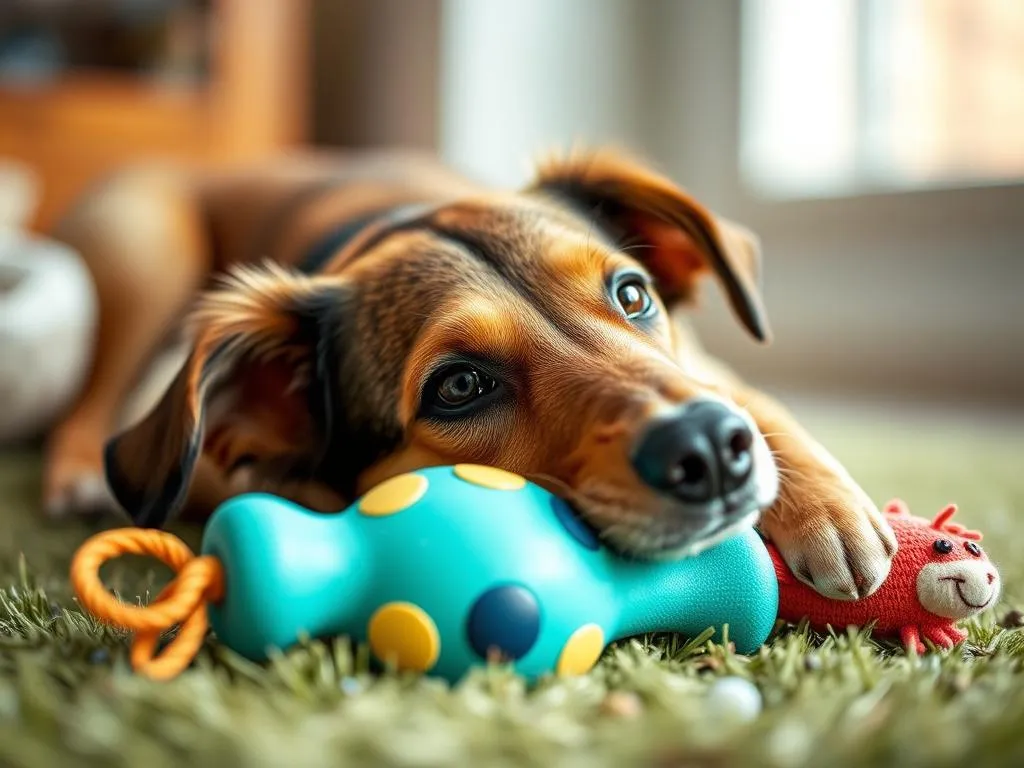
Understanding your dog’s behavior can be one of the most rewarding aspects of pet ownership. Dogs, as social creatures, have their own ways of expressing preferences, emotions, and instincts. One fascinating question that many dog owners find themselves pondering is, why does my dog have a favorite toy? This article delves into the complex world of dog behavior, emphasizing the importance of toys in a dog’s life and exploring the reasons behind their attachments.
Understanding Dog Behavior
What is Dog Behavior?
Dog behavior refers to the range of actions and reactions that dogs exhibit in response to their environment, social interactions, and instincts. As descendants of wolves, dogs display a variety of behaviors rooted in their ancestry, such as playfulness, territoriality, and pack mentality. Understanding these behaviors is crucial for fostering a harmonious relationship with your furry friend.
Factors Influencing Dog Behavior
Several factors contribute to how dogs behave, including:
- Genetics and Breeding: Different breeds have unique characteristics and instincts that can influence their behavior and preferences.
- Environmental Factors: A dog’s home life, including socialization experiences and training, can shape its behavior. For example, a dog raised in a stimulating environment may be more curious and playful.
- Individual Personality Traits: Just like humans, dogs have their own personalities. Some may be more adventurous, while others are more reserved, affecting their interactions with toys.
The Importance of Toys in a Dog’s Life
Types of Dog Toys
Dog toys come in various forms, each serving a different purpose. Here’s a brief overview:
- Chew Toys: These help keep a dog’s teeth clean and satisfy their natural urge to chew.
- Fetch Toys: Balls and frisbees encourage physical exercise and bonding through play.
- Interactive Toys: Toys that dispense treats can stimulate a dog’s mind and keep them engaged.
- Comfort Toys: Soft plush toys provide emotional comfort, especially for anxious dogs.
Role of Toys in a Dog’s Development
Toys play a significant role in a dog’s development, offering numerous benefits:
- Physical Exercise and Mental Stimulation: Toys encourage dogs to engage in active play, which is essential for their physical health and mental well-being.
- Encouraging Play and Social Interaction: Toys promote socialization, whether through play with humans or other dogs.
- Reducing Anxiety and Boredom: Having access to toys can alleviate feelings of loneliness and boredom, especially when left alone.
Why Dogs Develop Preferences for Certain Toys
Emotional Attachment
One of the key reasons why dogs have favorite toys is the emotional attachment they form. Dogs often bond with specific toys that provide them with comfort and security. This attachment can stem from:
- Early Experiences: Puppies might develop attachments to toys they had during their formative months.
- Consistent Use: A toy that is frequently played with can become a source of comfort, especially during stressful times.
Sensory Appeal
Dogs experience the world primarily through their senses. The texture, sound, and smell of toys can significantly influence their preferences:
- Texture: Some dogs prefer soft toys, while others may gravitate towards rubbery or bouncy materials.
- Sound: Toys that squeak or make noise often attract dogs due to their engaging sounds.
- Smell: A toy that carries the owner’s scent can be especially comforting to dogs, enhancing their emotional bond.
Play Patterns and Behavior
A dog’s individual play style can also dictate its favorite toy. For example:
- Fetch and Tug-of-War: Dogs that enjoy active play may prefer balls or tug toys, while those that like solitary play might favor chew toys.
- Exploratory Behavior: Some dogs are naturally curious and may prefer toys that stimulate their investigative instincts, like those with hidden treats.
Signs Your Dog Has a Favorite Toy
Behavioral Indicators
Observing your dog during playtime can reveal a lot about their preferences. Signs that your dog has a favorite toy include:
- Increased Excitement: Noticeable enthusiasm when the toy is presented.
- Focused Play: Engaging with the toy for longer periods compared to other toys.
- Changes in Mood: A noticeable improvement in demeanor when the favorite toy is around.
Physical Interactions
Physical signs are also telling indicators of a favorite toy:
- Carrying the Toy: Dogs may carry their favorite toy around the house, showcasing their attachment.
- Sleeping with It: When a dog chooses to sleep with a particular toy, it indicates a strong emotional bond.
- Protective Behavior: If a dog exhibits guarding behavior over a toy, it signifies that the toy holds significant value to them.
What to Do If Your Dog Shows Preference for Only One Toy
Assessing the Situation
If your dog is fixated on just one toy, assess whether this behavior is healthy or concerning. Consider:
- Condition of the Toy: Is the toy still safe to play with? Worn-out toys can pose choking hazards.
- Behavioral Changes: Are there any signs of anxiety or distress when the toy is not available?
Introducing New Toys
Introducing new toys can diversify your dog’s play experience. Here are some strategies:
- Gradual Introduction: Present new toys slowly and allow your dog to explore them at their own pace.
- Rotate Toys: Keep a rotation of toys to maintain interest and encourage your dog to engage with different options.
Encouraging Healthy Play Habits
Engaging in interactive play is essential for fostering diverse interests. Here are some tips:
- Interactive Play: Spend time playing games like fetch or tug-of-war to strengthen the bond and encourage exploration of different toys.
- Variety of Toys: Offer a mix of toy types to stimulate different play styles and keep your dog mentally engaged.
Case Studies: Dogs and Their Favorite Toys
Real-Life Examples
-
Buddy the Golden Retriever: Buddy had a plush duck he adored. He would carry it everywhere and even sleep with it. Observing Buddy’s behavior revealed that he found comfort in the toy during thunderstorms.
-
Max the Beagle: Max preferred a rubber ball, which he would fetch tirelessly. His owner noticed that he became more energetic and playful when the ball was introduced into playtime.
-
Bella the Dachshund: Bella had a favorite rope toy that she loved to tug. This preference seemed to stem from her energetic play style and her interactions with her owner during tug-of-war games.
What Can Be Learned
These case studies illustrate that dogs express their preferences based on emotional attachment, sensory appeal, and play styles. Understanding these nuances can help owners provide a more enriching environment for their pets.
Conclusion
In summary, understanding why does my dog have a favorite toy involves exploring various factors like emotional attachment, sensory appeal, and individual play styles. Toys play a crucial role in a dog’s life, offering comfort, stimulation, and opportunities for bonding. Observing your dog’s interactions with their toys can provide valuable insights into their preferences and emotions. Engaging with your dog through diverse play experiences can enhance their happiness and strengthen your relationship.
By paying attention to your dog’s behavior and preferences, you can ensure that their toy choices contribute positively to their overall well-being and happiness.









